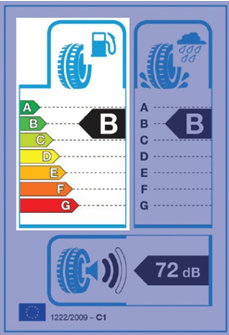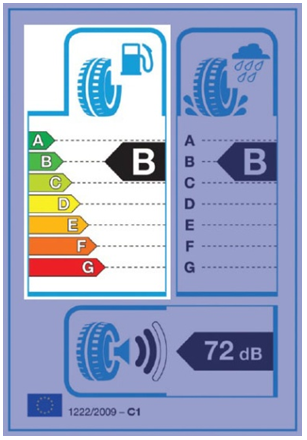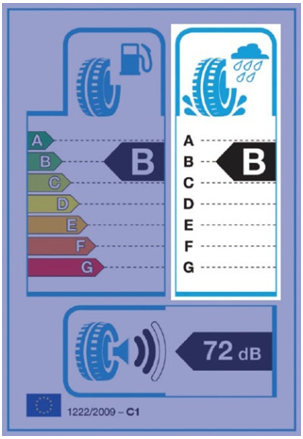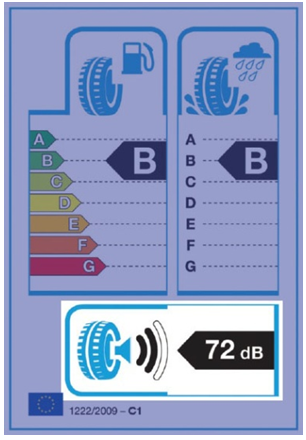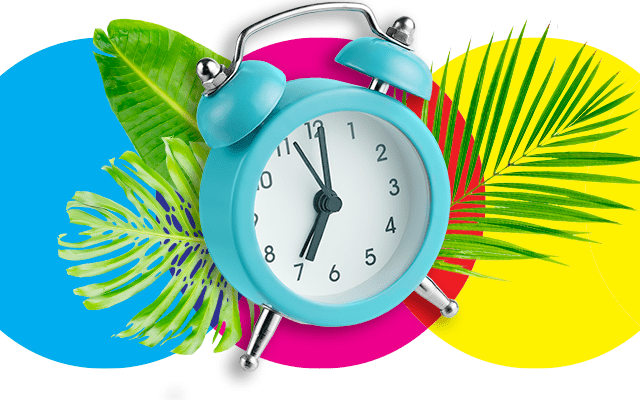In Canada, an Energuide label is applied to all new passenger vehicles in order to inform clients about their gas consumption, both in the city and on highways. According to the European Union, who has already made great steps regarding energy consumption labels for household appliances, stated that this labeling standard would be extended to vehicle tires.
Starting November 1st, 2012, all new tires for passenger vehicles and light duty vehicles must display a label classifying it according to three performance criteria (see below). This label will not be applied to the tires of heavy vehicles, charter buses and public buses, but the information still needs to be available on request.
On these labels, tires are classified according to three factors:
Fuel efficiency
Tires are the vehicle component with the most influence on its gas consumption because of the resistance that they create on the pavement.
Fuel efficiency is noted from A to G.
A : strongest score (lowest consumption)
G : weakest score (highest consumption)
Note: This color scale, also known as an “energy label,” is also used in the EU for household appliances and housing.
Wet grip performance
Tire behavior during hydroplaning has a large influence on road safety. The better the adhesion, the shorter the braking distance on wet ground.
Wet grip performance is noted from A to G.
A : shortest braking distance
G : longest braking distance
Note: Although this is a scale from A to G, levels D and G are never assigned.
External rolling noise
Noise pollution, to which automobile traffic contributes, causes harmful health effects. As this criteria does not reckon in the noise audible inside the vehicle, the reduction of external rolling noise really appeals to the more altruistic aspect of the consumer.
The external rolling noise is noted according to three different classes (identified by a blackening of the pictogram).
Note: These classes are supported by the noise level in decibels.
Awareness
According to the Official Journal of the European Union, the label “could influence the buying decisions of end-users,” but I think that the EU is mainly looking to raise awareness among the population. Three important aspects are promoted: the economy, safety and health. As these three factors are interdependent, manufacturers are now faced with a bigger challenge. Should they improve rolling resistance, knowing full well that this could reduce wet grip performance? Or should they wait before increasing wet grip performance so as not to increase external rolling noise?
Today, this classification developed by the European Union does not take snow tires into account, which are specially fabricated for snow and black ice. So it would be surprising if Canada adopted this law as it is. But if Canada does extend its energy standard to tires, IMS will be ready to print all new labels!

